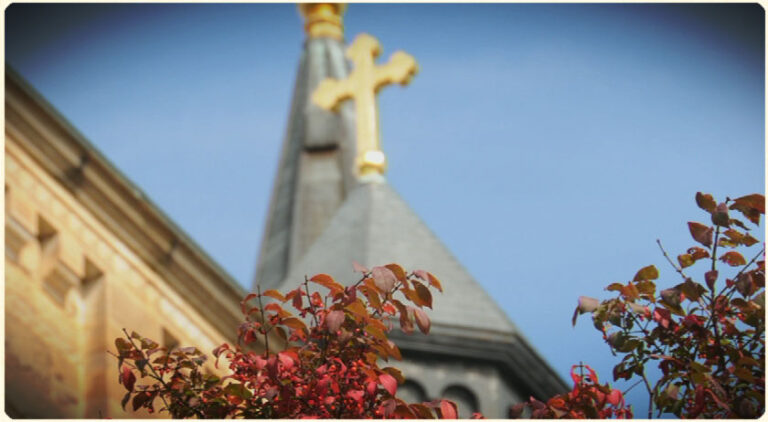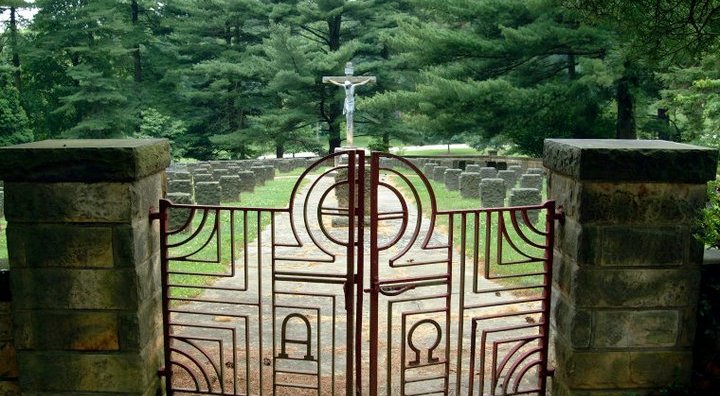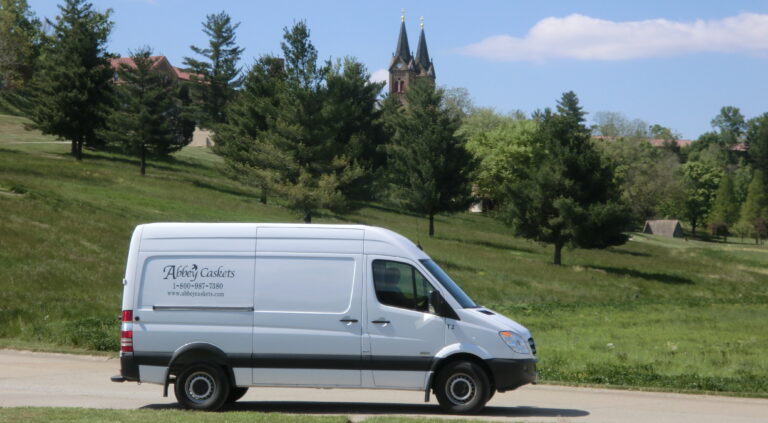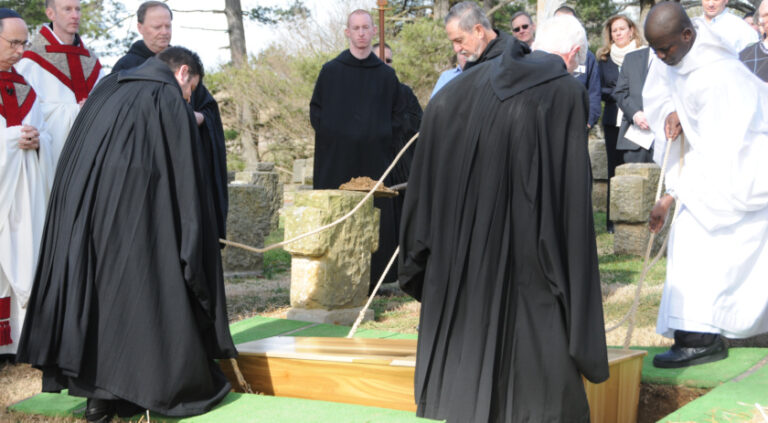The Church’s teaching on funerals, cremation and burial is summarized in the Catechism of the Catholic Church. At number 2300 in that document, the official teaching states:
The bodies of the dead must be treated with respect and charity, in faith and hope of the Resurrection. The burial of the dead is a corporal work of mercy; it honors the children of God, who are temples of the Holy Spirit.
And at number 2301, the Catechism states:
The Church permits cremation, provided that it does not demonstrate a denial of faith in the resurrection of the body.
Furthermore, the Roman Catholic Church’s Code of Canon Law states that,
Church funerals are to be celebrated according to the norms of the liturgical books. In these funeral rites the Church prays for the spiritual support of the dead, it honors their bodies, and at the same time it brings to the living the comfort of hope. The Church earnestly recommends that the pious custom of burial be retained, but it does not forbid cremation unless this is chosen for reasons which are contrary to Christian teaching.
The last part of the Canon above connects with the Catechism in its concern that Christians not have as their reason for cremating the body of their deceased loved one any sort of denial of our Catholic faith in the resurrection of the body.
There are essentially three parts to the full rites of Christian burial observed in the Catholic Church: the Vigil (sometimes referred to as the Wake or Visitation), the funeral Mass, and rites of committal.
In To Pray for the Living and the Dead, a pastoral letter of Bishop James Garland of the Diocese of Marquette, he describes the three parts of the “order of Christian burial” as spiritual moments. During the vigil, Scripture readings, prayers and storytelling (eulogies) are intended to connect grieving persons spiritually with their departed loved one, and with God’s presence in the Spirit, and with the gifts of Christian faith and hope. The vigil rite is an act of charity on behalf of the deceased as well as his or her loved ones left behind. Bishop Garland writes:
With the special time afforded for the sharing of stories and memories from the life of the deceased, the vigil can be a good beginning for the long process of coming to terms with life now that the deceased person is gone.
The second spiritual moment is the funeral Mass. The Eucharist is the centerpiece of all Christian prayer. The focus of our grief becomes then, paradoxically, a celebration, the praise and thanks of God’s people for the paschal mystery of Christ’s saving death and resurrection.
In our commemoration and representation of Christ’s own saving passion in the Eucharist, we lift up the deceased’s journey of life, from birth to death in the hope of the resurrection, and in so doing, the Church extends hope to the family and friends of the deceased.
The third movement is the rite of committal. Bishop Garland writes that:
Out of respect for the deceased, we commit the body to the earth from which it came, with the sure and certain hope that the dead will rise again and we shall be reunited with them in heaven.
The Order of Christian Funerals allows for the cremated remains to be present at the funeral liturgy, kept in a “worthy vessel.” Still, it is earnestly recommended, even if not required, that Catholics seriously consider retaining the body of their beloved deceased in a casket suitable for cremation in order to render fitting honor to it “as the temple of the Lord” that it was in life, especially for the first of the two above-mentioned sacred rites – the Vigil and funeral Mass.
Symbolic gestures are a meaningful part of Catholic ritual. The first part of the funeral Mass, the “reception of the body,” includes a small ritual at the door of the church utilizing a sprinkling rite to recall the deceased’s baptism into Christ. It serves as a final marker, so to speak, for the entire Christian journey.
When the deceased began life in Christ at baptism, he/she was “received” at the entrance of the church and now, having completed the journey into Christ, the body of the deceased is received again at the door of the church, representing our hope that he or she is received into paradise.
After the funeral and the commemoration rite, the final prayers of the funeral Mass, the body can be transported for cremation in preparation for a later committal rite and burial as soon as possible after the funeral Mass, which is best celebrated with the family at the place of interment.
The cremains of Catholics are to be preserved (as a body would be) in a mausoleum or buried in a cemetery plot blessed by the presiding minister (priest or deacon) according to the Catholic rites of committal. Bishop Garland reminds the faithful, “Out of respect for the body, the Church does not permit the remains to be scattered over the water or some favorite spot.”
I think retaining the body for the Vigil and funeral Mass is good practice for Catholics wanting to extend to family and friends an opportunity to respect the memory of the deceased and honor them with the full rites of the Catholic Church as they were meant to be celebrated, as well as allow loved ones to grieve in an open manner without in any way veiling the difficult fact of their loved one’s death.
Fr. Adrian Burke, OSB
Monk of Saint Meinrad Archabbey
